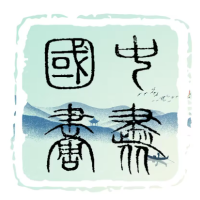昔有梅邑,地瘠而民淳朴。千九百年,冬十月之望日,绍琼降世,世呼风眠。其父伯恩,为匠石之手,精工宋体,碑文以维生。风眠幼抱志于丹青,画艺早绽,师表群赞其非凡。
Once there was a place called Mei Village, characterized by its barren land but pure-hearted people. In the late autumn of the 1900s, Shao Qiong was born, later known as Fengmian. His father, Bo En, was a skilled stone carver specializing in Song typeface for inscriptions, which provided their livelihood. From a young age, Fengmian was drawn to painting, showing early talent that impressed his teachers with its extraordinary nature.
林 风 眠

岁月荏苒,风眠学艺有成,赴北平艺专掌校门,兼教务,主西画科。倾其心血于艺教之道;于绘画艺境,展其卓识。广涉西洋画法,融通中华文脉。其油画,题以反封建,呈社会痛点,扬人文关切。风眠亦嗜中华传统之艺,研隋唐山水,敦煌壁画,宋瓷汉刻,战国漆器,民国木版,皮影之戏,皆焕新彩于其笔下。
画坛兴起,林风眠挥洒中西之翰墨,孤标独步。其匠心,不拘泥于昔之古典,不囿于今之陈规,革旧维新,创造为魂。群艺汇聚,天下交融,抽丝剥茧,提其精华,摒其渣滓,以臻彼此益彰之境。其画,意态超脱,神与技并茂,真与美合璧,若阴阳交融,天地一色。布局虽严,然透气自如,犹密林之光透,夜空之辰星。色艳比对之间,亦柔和如春日之暖阳,秋波之澄澈。林风眠之艺,古今互融,东西互鉴,深沉对语,状如诗画,观者如翱翔云汉,游心仙境。
As time went by, Fengmian's skills matured. He went to Peiping to head the School of Fine Arts, where he also managed academic affairs and led the department of Western painting. He dedicated himself to the path of art education; in the realm of painting, he demonstrated profound insights. Fengmian explored Western painting techniques extensively and integrated them with Chinese cultural elements. His oil paintings, themed against feudalism, depicted societal pain points and emphasized humanistic concerns. He also cherished traditional Chinese arts, delving into Sui and Tang landscapes, Dunhuang murals, Song porcelain, Han engravings, Republican woodblocks, and shadow puppetry, all revitalized under his brush.
In the art circles, Lin Fengmian uniquely blended Eastern and Western techniques, establishing himself as a master with originality. His craftsmanship was not confined toical conventions of the past nor restricted by the clichés of the present. He innovated to rejuvenate, with creativity as his core. As he gathered diverse artistic expressions, they blended and refined each other, enhancing their mutual brilliance. His paintings expressed transcendence in spirit and skill, achieving a harmonious blend of truth and beauty, as if yin and yang were merging, heaven and earth in unison. Though his compositions were meticulous, they breathed freely, like light filtering through a dense forest or stars in the night sky. His use of vibrant colors was also gentle, like the warm sun of spring or the clear autumn waters. Lin Fengmian's art merged past with present, East with West, in deep, poetic dialogues that allowed viewers to soar through celestial realms and wander in fantastical landscapes.
林风眠作品欣赏













二十世纪风云变幻,林风眠持笔如戈,于画幅之上铭记苍生炎凉。其油画,奉表现主义之大旨,呼唤人道之光芒,昭示抗争之情,浓烈且深邃。图式简约而充实,笔锋刚劲如出奇刀,色泽沉稳而猛烈。乱世之中,林氏执丹青以记世态,其作承扬表现主义之风,发扬人道之光,笔下抗争之意浓烈而遥远。构图虽简却力透纸背,笔法若宝剑出鞘,色彩如金石铸成,每幅画作,皆为乾坤之呼吸,每一色彩,乃是灵魂之隐语。及至甲子年间,林氏风格大变,投笔于国画之域,尤工花鸟、山水、人物,汇东西艺术之大成,独创“风眠体”。笔法简练迅捷,色彩斑斓生动,画面蕴含灵动,若隐若现,如梦似幻,成一时之绝唱,自成一格于画坛。
抗战之艰年,林风眠持守艺道真髓,摈功利之诱,弃写实之繁。专于宣纸彩墨,寄情山水花鸟、仕女苗疆及戏曲雅趣。技材双破旧规,探新境之奥,瓷绘及空间光影之合一,墨色之层叠,巧融西方之写实与东方之写意,使之错位交融,显中西合璧之新艺态。此中西之调和,非外饰之浮修,实乃艺道内外、神形兼顾之根本变革。林氏之画,于生命之悲壮、孤寂沉郁中,亦不泯失空灵雅韵。以多维视角,铸一派独树风范。画中构图严整,留白有致,笔触灵逸,色彩和谐,一气呵成,既彰时代气象,亦显民族风韵,更展作者个性之厚重。
林风眠,中西艺途之渊薮也。画业润泽二十世纪之史册,既承当世文脉,亦汇西东艺韵,开独步寰宇之新境。其如隐士之遁世高洁,别开生面,艺成高阁。斯人教育之功,桃李满园,育艺术英杰无数,如李可染、赵无极、朱德群、吴冠中、席德进、王式廓、罗工柳等,皆成大家于世,各据一方,名播四海。其作品,令华夏美术瞩目,亦使海外诸国传颂,声振远方,如春雷惊百谷,草木纵横舒。
During the turbulent 20th century, Lin Fengmian wielded his brush like a weapon, inscribing the vicissitudes of life on his canvases. His oil paintings adhered to the principles of Expressionism, calling for the light of humanity and depicting the intensity of struggle with depth and fervor. The composition was simple yet full, the brushstrokes bold as if cutting through unexpectedly, the colors deep and fierce. In chaotic times, Lin's art recorded the state of the world, promoting the spirit of Expressionism and advocating for humanity. His straightforward compositions hid a powerful force, his strokes were sharp as unsheathed swords, and his colors as enduring as metal and stone. Each painting was a breath of the universe, each color a secret language of the soul. By the Jiazi years, Lin's style dramatically shifted to traditional Chinese painting, specializing in flowers, landscapes, and figures, synthesizing Eastern and Western art into the unique "Fengmian style." His strokes were concise and swift, colors vibrant and lively, with an ethereal quality that was dreamlike and illusory, creating an unparalleled masterpiece in the art world.
During the difficult years of the war, Lin Fengmian adhered to the essence of artistic integrity, rejecting the lure of commercialism and the clutter of realism. He focused on traditional Chinese ink and color on rice paper, expressing his love for landscapes, birds, court ladies, ethnic minorities, and the refined tastes of opera. His techniques broke old conventions and explored new realms, merging porcelain painting and spatial interplays of light and shadow, layering ink depths, and skillfully blending Western realism with Eastern abstraction. This synthesis was not merely superficial embellishment but a fundamental transformation respecting both the internal and external aspects of art. Lin's paintings, in their portrayal of life's solemnity and solitude, never lost their ethereal and elegant charm. Through a multidimensional perspective, he established a unique artistic style. His paintings were structurally rigorous with strategic use of negative space, his brushwork fluid and colors harmonious, executed in one breath, embodying the spirit of the times and the essence of national character, also reflecting the profound individuality of the artist.
Lin Fengmian was a deep well of Eastern and Western artistic traditions. His contributions enriched the history of 20th-century Chinese art, embracing contemporary cultural streams while integrating Eastern and Western artistic flavors, pioneering a new realm unmatched globally. His life, akin to that of a hermit with a noble and distinct path, reached artistic heights. His educational achievements were vast, nurturing countless art talents like Li Keran, Zhao Wuji, Chu Teh-Chun, Wu Guanzhong, Xi Dejin, Wang Shikuo, and Luo Gongliu, who became renowned in their own right and celebrated worldwide. His works not only captivated Chinese art circles but also echoed overseas, resonating far and wide like the spring thunder awakening the earth.
壬午年八月庚子,林风眠永逝于香江,享寿九十有一。其一生精艺,印绘于二十世纪华夏艺史之册,为后世师法仰观之典范。林氏之名,遂镌刻于世,其艺术影响,犹长江之恒流,若北斗之长挂。
Lin Fengmian passed away in August of the year Renwu, on the day of Gengzi, in Hong Kong, at the age of ninety-one. His life's work, imprinted on the annals of 20th-century Chinese art history, serves as a model for future generations to admire and emulate. His name is forever etched in history, his artistic influence flowing endlessly like the Yangtze River, ever-present like the North Star in the sky.
责任编辑:苗君
